Concurrent Session 7 | May 8 | 8:00 – 9:30 AM
Session 7.1
NEPA | How CEQ NEPA Phases 1&2 Responds to America's Needs Today
8:00 – 9:30 AM
| About the Presentation |
|
The National Environmental Policy Act (NEPA) was passed in 1969/70, with no substantive changes until 2020. The Council on Environmental Quality (CEQ) subsequently developed two NEPA Rules to further modify NEPA to the needs of Americans and their environment (Phase 1 and Phase 2 NEPA Rules). This panel will discuss recent themes of change in NEPA as we've heard them across various federal sectors from the public, stakeholders, and agencies, how CEQ directly responds to the Phase 1 and 2 NEPA Rules, and why these rule changes matter to Americans in 2024.
Objectives:
- Discuss themes of change in NEPA review across various Federal agencies and programs.
- Highlight how Phase 1 and 2 NEPA Rules were developed in response to public and agency coordination, as well as current themes in America today.
|
| About the Moderator |
|
 Jamie Bents, AICP, CTP Jamie Bents, AICP, CTP
Vice President, Director, Environmental Planning
WSP USA
Jamie Bents is an environmental and transportation planner with over 20 years of career experience. She is a Director of Environmental Planning at WSP and delivers NEPA documents, PEL studies, and other planning or funding studies across the Midwest. She uses her NEPA leadership to streamline projects, develop innovative solutions, and collaborate across communities, groups, and disciplines for inclusivity.
Jamie’s NEPA experience roots in socioeconomics, equity, environmental justice, highway noise analysis, Section 4(f), and transportation safety and operations. She is a National Highway Institute course co-instructor alongside FHWA for courses on NEPA, Section 4(f), and Planning and Environment Linkages.
|
| About the Speakers |
|
 Michael D. Smith, PhD Michael D. Smith, PhD
Senior Vice President and National Practice Leader, Environmental Process and Policy
WSP USA
Dr. Michael D. Smith is a nationally-recognized leader in National Environmental Policy Act (NEPA) compliance with over 29 years of experience in project and program management, technical analysis, policy development, and training/education for a wide range of public and private sector clients. He is currently a Senior Vice President and the National Practice Leader for WSP USA's Environmental Policy and Process Group. He has managed and provided compliance review for some of the nation's largest, most complex, and highly controversial projects, including major energy, transportation, and water infrastructure projects.
|
|
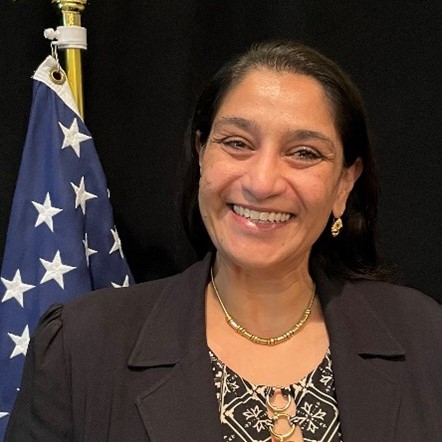
Manisha Patel, JD
Deputy Executive Director
Federal Permitting Improvement Steering Council
Manisha Patel is the Deputy Executive Director of the Federal Permitting Improvement Steering Council (Permitting Council). Ms. Patel has over two decades of experience developing and implementing regulations, policies, and guidance for public agencies and the private sector to deliver infrastructure projects effectively and efficiently, while protecting our natural resources and producing positive outcomes for our communities. Her mastery of the National Environmental Policy Act (NEPA) and acumen for solving complex multi-jurisdictional problems, including working with a broad and diverse range of stakeholders, have yielded some of the fundamental federal environmental and energy efficiency regulations and policy of the last decade. Prior to joining the executive staff at the Permitting Council, Ms. Patel was Vice President for Environmental Process and Policy Practice at WSP. Ms. Patel’s former federal service includes serving as the Deputy General Counsel for the White House Council on Environmental Quality (CEQ) to provide government-wide legal advice on NEPA. She also served as the Deputy Associate Director for Regulatory Policy at CEQ, working closely with federal agencies, state and local governments, stakeholders, and other White House offices to advance sound and practical policy. Prior to joining CEQ, she served in various capacities at the United States Environmental Protection Agency (EPA), holding leadership positions in EPA’s Office of General Counsel and Office of Regional Counsel (Region 6).
Ms. Patel has a Bachelor of Arts in Political Science from Northwestern University and a Juris Doctorate from Georgetown University Law Center. She is also an alumna of the National Renewable Energy Laboratory’s Executive Energy Leadership Academy.
|
|
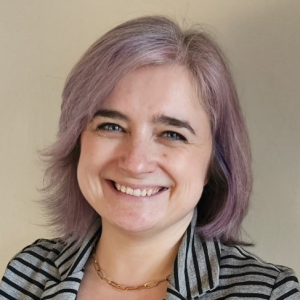 Kelcie Young, AICP Kelcie Young, AICP
Environmental Project Manager
Metro Transit
Kelcie Young joined Metro Transit in 2015. She manages environmental reviews for the Green Line Extension and Blue Line Extension light rail projects and tracks mitigation commitments through construction. With over 15 years of experience as a NEPA practitioner, her focuses include navigating complex agency coordination and finding solutions to ensure projects serve community needs. Kelcie holds a Master of Urban and Regional Planning degree from the University of Minnesota Humphrey School.
|
|
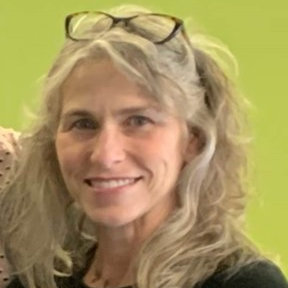
Connell Dunning
Environmental Protection Specialist, NEPA/Transportation Lead
US Environmental Protection Agency, Region 9
Connell has 23 years of experience with the National Environmental Policy Act and is currently with the Region 9 Environmental Protection Agency (Arizona, Hawaii, Nevada, California, and the Pacific Islands.) Ms. Dunning prepares EPA comments following the review of federal NEPA compliance documents across multiple sectors, including transportation, and works with state/federal agencies throughout the NEPA process to reduce environmental impacts and produce better environmental outcomes. She has worked at US Fish and Wildlife Service, Bureau of Land Management, and US Forest Service and has a BS, Zoology (University of Texas, Austin), and an MS, Entomology (University of California, Riverside.)
|
Back to Top
Session 7.2 A
Geospatial | Mission Possible: Supporting a 54,000-acre field effort with GIS
8:00 – 8:30 AM
| About the Presentation |
|
The Nature Conservancy (TNC) purchased a ~54,000-acre property in southeastern Kentucky to provide conservation as well as sustainable forestry to bring income into surrounding communities. The Kentucky Department of Fish and Wildlife Resources (KDFWR) is placing a public access easement on the property to secure long-term public recreation access. As part of this transaction, KDFWR hired Johnson, Mirmiran, & Thompson, Inc. (JMT) to provide a Baseline Documentation Report (BDR) and Environmental Site Assessment (ESA) to summarize the property's condition at the time of the easement closing, including physical features, current land use, and natural and cultural resources. This effort included results of desktop analysis and on-the-ground observations and photography. To ensure high-quality results and timely delivery for a large-scale two-week operation on rugged terrain (four discrete sections of property distributed over three counties within the foothills of the Appalachians), JMT's environmental and technology teams collaborated on report research, field planning, and data collection method design.
Areas of environmental interest (AOEIs) were identified, mapped, and deployed to ESRI's mobile app, Field Maps, for navigation prior to field work, along with trails and relevant background data. Offline-enabled digital maps and offline-enabled base maps were prepared. Location tracking was configured in Field Maps to document coverage of the property by the field effort. ESRI's Survey123 digital data collection form was integrated with Field Maps and tailored to meet the environmental team's needs for AOEI documentation and photography. A Survey123 report was designed to automatically export photos and their associated metadata in the format needed for the reports. Four teams of two performed the property reconnaissance on 4-wheel drive side-by-side ATVs using public roads and accessible ATV trails and using high-precision Trimble Catalyst GNSS Receivers paired to their tablets. 137 AOEIs were identified prior to fieldwork, 111 of which were visited, with an additional 80 newly identified in the field. Three of the teams completed their effort five days ahead of schedule, with the help of real-time monitoring of their progress and location tracking using ESRI Dashboards. Over 600 photos were collected, and 26 map series were produced for the report as a result of this effort. Using GIS, the technology team assisted the environmental team in delivering a timely, high-quality product on a short timeline with field time savings, and provided innovative, customized tools to ensure safety and ease of navigation in the field for staff. These technology solutions enabled field teams to complete their work using only 60% of the hours originally budgeted.
|
| About the Speakers |
|
 Erin Markel, PWS, QP Erin Markel, PWS, QP
Senior Environmental Scientist
Johnson, Mirmiran, & Thompson, Inc.
Ms. Markel has 14 years of experience in environmental consulting for a variety of utility, government, mitigation bank, and transportation clients throughout Maryland, specializing in wetland delineation and the wetland permit application process. Since 2019, she has served as the wetland permitting lead for the Maryland Transportation Administration's Express Toll Lane, consisting of 24 contracts. She previously spent four years as an onsite project manager with the Maryland State Highway Administration, which included managing mitigation projects and obtaining wetlands and waterways permits for highway and restoration projects. Ms. Markel trains natural resource staff and serves as a mentor on wetland delineation and permitting as well as use of GIS for natural resource deliverables.
|
|
 Nour Salam Nour Salam
GIS Analyst
JMT Technology Group
Ms. Salam is a GIS analyst with five years of experience in creating geospatial and database solutions for state government natural resource agencies, specifically in Kentucky and Mississippi. She served as a data analyst, working in an Oracle spatial database, running and designing SQL queries, and running SQL statements to modify data. She has experience using ESRI's desktop GIS software to create, edit, query, and analyze data, as well as publish map services from an SDE. She has created field data collection solutions for biologists using ESRI's mobile suite of applications (Field Maps and Survey123) and provides GIS support to staff. She has two years of experience mentoring GIS staff and a good working knowledge of the natural resources and environmental conservation industry.
|
Session 7.2 B
Geospatial | Leveraging Geospatial Technology For Environmental Monitoring and Compliance Work
8:30 – 9:00 AM
| About the Presentation |
|
Leveraging geospatial technologies as a project management tool has given Environmental Planning Group, a Terracon Company (EPG), the ability to effectively communicate essential environmental conditions between agencies, construction operators, and compliance monitors. Using Esri SAS software (including WebApps, Survey123, and Field Maps) has allowed us to offer real-time data management and field support; project tracking progress; on-the-fly engineering updates; exports for weekly, quarterly, and annual reports; timesheet management for sub-consultants; and a document portal for all project documents. Users work through ArcGIS Online collaborations for group access to view and edit project data on the fly, share photos and notify hazards, track flight paths, and export project documents and maps. Meanwhile, project managers can review and keep track of the project from the office. These solutions are helping project managers, construction operators, and environmental compliance monitors communicate more efficiently. Valuable, near real-time access to environmentally sensitive resources that can directly impact work that day, reduces project downtime, pinpoints sensitive areas before construction starts, and shares across monitors in various locations across the project.
|
| About the Speakers |
|
 Mehmet Secilmis, MS GISP Mehmet Secilmis, MS GISP
Senior Global Account Manager - AEC & Environmental
ESRI
Mehmet is the Senior Global Account Manager at Esri's Architecture, Engineering, Construction (AEC) and Environmental sector team in the USA. He has more than 20 years of diverse experience in civil/environmental engineering, GIS, and management. His educational background includes an MS degree in Environmental Technology and an MS degree in Management with a concentration in Management of Technology.
|
|
 Rob Cahalan Rob Cahalan
Environmental Resources Management (ERM)
Rob is a GIS Consultant and has worked in the field of GIS since 2012. Prior to joining ERM, Rob was a field biologist and GIS manager for Midwest Natural Resources. As a field biologist, Rob conducted native plant community mapping, avian surveys, wetland delineation, and invasive species mapping, and he assisted in rare flora surveys. While serving as a GIS manager, Rob was responsible for processing biological field data, QA/QC of spatial and tabular data, maintaining GPS equipment, and producing maps, figures and tables for reports.
|
Session 7.2 C
Geospatial | Streamlining Environmental Planning and Permitting for SCDOT
9:00 – 9:30 AM
| About the Presentation |
|
The environment is a critical component to assess when planning a roadway or bridge project and the South Carolina Department of Transportation (SCDOT) Environmental Services Office (ESO) is tasked with ensuring the impacts to the natural and human environment are avoided, minimized, or mitigated. With an increasing number of projects due to a phased gas tax increase plus the recent infrastructure bill, SCDOT's ESO staff of only 22 employees saw the need to streamline environmental planning and permitting processes to ensure projects can continue to be delivered on time and on budget. Over the past five years, the University of South Carolina (USC), in collaboration with SCDOT, developed five new applications to address the issues identified by ESO; three of these tools will be presented: 1) the Mitigation Forecasting Tool (MFT) aims to reduce the number of projects at risk due to the lack of wetland and stream mitigation bank credit coverage and low mitigation credit availability; 2) the Project Screening Application (PST 2.0) aims to ensure that SCDOT projects are developed in a way that avoids, minimizes, and mitigates impacts to the natural and human environment; and 3) the Section 404 E-permit aims to standardize permit submittals in terms of what information to include, how the documents should be presented, wherein the package each document should be placed, and how permit drawings should be presented. These applications have generated very positive feedback from SCDOT internal users, consultants on contract, USACE, and other State DOTs.
Results from beta testing and actual use indicate the following tangible benefits for the SCDOT:1. The external MFT web app has strengthened the relationship between the SCDOT and the mitigation banking community. As a result, the mitigation risk in South Carolina has been significantly reduced and will continue to be reduced with the increase in the number of approved banks across the state, with more on the horizon, pending approvals.2. The use of the PST 2.0 web app is expected to save ESO and SCDOT design staff approximately 40+ hours a week due to the ability to perform early project screenings which establishes parameters and eliminates certain design options. 3. The use of the E-permit smart form is expected to save SCDOT money by reducing consultants on contract by 150+ hours per month based on a monthly average of two general permits.4. The average USACE review and approval time for 2 years before the launch of E-permit was 75 days with the longest duration being 243 days. The current average approval timeline for the calendar year 2023 is now 44 days; the shortest turnaround is 6 days and the longest is 79.
|
| About the Speaker |
|
 Siobhan Gordon Siobhan Gordon
Senior Environmental Planner
Mead & Hunt
As an Environmental Planner, Siobhan Gordon has dedicated the last 15 years to balancing the environment with transportation projects. She is passionate about finding solutions that move us forward while protecting our planet. Outside of work, you can find Siobhan enjoying the outdoors with her husband, son, and two boxers.
|
|
 Sean Connolly Sean Connolly
Assistant Director of Environmental Services
South Carolina Department of Transportation (SCDOT)
Received an undergraduate degree in biology; he also received a Master’s degree in Environmental Resource Management from USC. He began my career with the South Carolina Department of Health and Environmental Control (SCDHEC) where he was responsible for certification and permitting activities for large development interests including SCDOT projects. He then worked as an environmental consultant for over 2 years. Presently, he has over 25 years of experience working with natural resource, mitigation and environmental permitting. His current position is with SCDOT were he serves as Assistant Director and manages both the mitigation and permitting divisions.
|
Session 7.3
Cultural Resources | Preserving History: Cultural Resources Preservation Through Collaboration
8:00 – 9:30 AM
| About the Presentation |
|
Cultural resource preservation is not just a legal requirement but an ethical imperative. In this panel discussion, we will delve into the heart of successful environmental compliance by highlighting the critical role of early coordination with stakeholders in preserving our cultural heritage. Through real-world case studies, expert insights, and shared experiences, this session will illuminate the path toward a more inclusive and effective approach to cultural resource preservation.
Our diverse panelists will explore the following key topics:1. Legal Framework: Gain insights into the legal framework that governs cultural resources protection and how early coordination with stakeholders aligns with regulatory requirements.2. Effective Collaboration: Discover how consultants and state and tribal agencies can collaborate seamlessly, drawing from their unique expertise to ensure a comprehensive cultural resources review.3. Tribal Engagement: Learn about the importance of early and meaningful tribal engagement in the environmental review process and the benefits it brings to both agencies and tribal nations.4. Stakeholder Engagement Strategies: Understand the significance of engaging other relevant stakeholders, such as Historic Preservation Commissions, and how effective strategies can lead to better project outcomes and strengthened relationships.5. Best Practices: Explore best practices and successful strategies for identifying, evaluating, and mitigating cultural resource impacts in projects of varying scale and complexity. We aim to provide attendees with a better understanding of the tangible benefits of early collaboration with stakeholders for improved cultural resource preservation. Join us for an engaging discussion that showcases the transformative power of coordination, respect, and shared responsibility in the realm of environmental review processes.
Explore the transformational potential of early engagement with stakeholders in cultural resource preservation. Our diverse group of panelists will lead you through state and federal legal frameworks, effective collaboration techniques, and best practices. Join us for insights that can redefine the environmental review process.
|
| About the Moderator |
|
 Renee Barnes Renee Barnes
Cultural Resources Project Manager
Bolton & Menk, Inc.
An architectural historian with 16+ years of experience, Renée now leads the cultural resource team at Bolten & Menk. An expert in Section 106 compliance, she assesses development projects' impact on historical sites. Previously at MnDOT, Renée ensured cultural resource regulations were met, supervising staff and reviewing transportation corridors for historic preservation. This included regularly collaborating with MN SHPO and other agencies to delineate Area of Potential Effects (APEs) for historic-age property surveys that could be impacted by proposed projects. This experience honed her expertise in implementing Section 106 and protecting historic properties.
|
| About the Speaker(s) |
|
 Melissa Cerda Melissa Cerda
Cultural Resources Manager, Senior
Minnesota Indian Affairs Council
Melissa Cerda is the Senior Cultural Resources Manager at the Minnesota Indian Affairs Council. She holds a Bachelor's degree in Anthropology and History from the University of Texas and is currently pursuing a Master's degree in Cultural Heritage Studies at the University of Minnesota Twin Cities. In her role, Melissa focuses on historic preservation projects crucial to Minnesota's Indigenous communities. Her work encompasses burial recoveries, repatriation under Minnesota Statute 307.08 and NAGPRA, and compliance efforts safeguarding American Indian sites from development. With extensive experience, Melissa collaborates with Tribal councils, State agencies, cultural resource management firms, museums, and educational institutions nationwide.
|
|
 Steven Blondo Steven Blondo
Owner
Blondo Consulting, LLC.
With over twenty years in cultural resource management, Steven Blondo is a seasoned field archaeologist and research historian for consulting firms across the US. He excels in locating, excavating, and interpreting historic and prehistoric sites, crafting diverse reports, and curating artifact collections. Collaborating with tribal liaisons, he integrates Native American perspectives into planning processes. As a research historian, he conducts extensive research at institutions like the National Archives, Library of Congress, and National Anthropological Archives, as well as state and local historical societies. Steven meets the Secretary of the Interior’s Professional Qualifications Standards for History, Archaeology, and Architectural History.
|
|
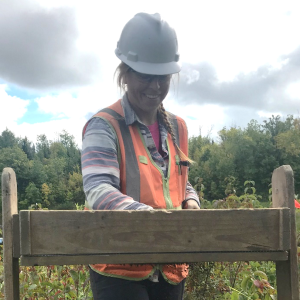 Lucy Harrington Lucy Harrington
Environmental Review Archaeologist
State Historic Preservation Office
Lucy Harrington is one of SHPO’s archaeologists, working in the Environmental Review Program. She has a robust knowledge of how archaeology interacts with proposed development projects. She also has over 10 years of experience as a working field archaeologist. She is interested in innovative ways to preserve our archaeological heritage while continuing to develop our communities for future generations.
|
|
 Amy Ollila Amy Ollila
Program Manager
Minnesota Historical Society - MN DNR Division of Parks and Trails
Amy Ollila has 15 years of experience in cultural resource management. She holds an undergraduate degree in anthropology and elementary education from Hamline University and a Master's from Glasgow University in Material Culture and Artifact Studies. Recently joining MnDOT as Principal Archaeologist, she previously served as Program Manager for the Minnesota Historical Society's Cultural Resource Management Program for MnDNR State Parks and Trails. Amy managed a team overseeing the protection of over 12,000 archaeological and cemetery sites, National Historic Landmarks, and historic resources within the state park system. She collaborated closely with multiple agencies and organizations to ensure frequent coordination and proper investigation and protection of cultural sites.
|
|
 Jennifer Tworzyanski Jennifer Tworzyanski
Assistant to State Archaeologist
Office of the State Archaeologist
Jennifer Tworzynaski, with a 20-year archaeology career across three continents, now focuses primarily on Minnesota. She advocates for the preservation and public presentation of archaeological and historical records. Currently assisting the Minnesota State Archaeologist, her role involves reviewing development plans to mitigate impacts on archaeological and cemetery sites. She collaborates with various stakeholders to find development solutions while protecting cultural heritage sites. Jennifer conducts public outreach to raise awareness of Minnesota's history and the importance of preservation. She provides professional expertise and meets the U.S. Secretary of the Interior's Professional Qualifications Standards in history, archaeology, prehistoric archaeology, and historical archaeology.
|
|
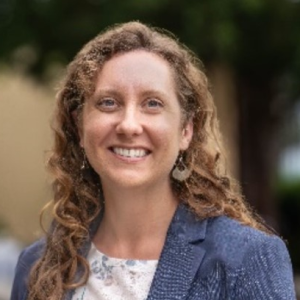 Kelly Wolf Kelly Wolf
Senior Cultural Resources Specialist
Bolton & Menk, Inc.
Kelly Wolf, a Minnesota native, holds a Bachelor of Arts in Anthropology and History from Hamline University and a Master of Arts in Cultural Heritage Management from the University of Minnesota. Since 2010, she has worked in Cultural Resources Management, currently serving as a Senior Cultural Resources Specialist at Bolton & Menk. Kelly leads numerous cultural resources projects, History/Architecture projects, conducts research, fieldwork, artifact analysis, and prepares compliance recommendations. A member of the Register of Professional Archaeologists since 2016, she meets the Secretary of the Interior's Professional Qualifications Standards. Specializing in historic archaeology, Kelly values community engagement and strives for holistic preservation of local history.
|
Back to Top
Session 7.4 A
NEPA | Fast-41: What Is It, Best Practices and Lessons Learned
8:00 – 9:00 AM
| About the Presentation |
|
Often, when seasoned environmental practitioners think of synchronized environmental review and permitting, the first thing that comes to mind is a Section 404 Clean Water Act/National Environmental Policy Act (NEPA) merger. However, in addition to environmental review and permitting mergers and schedules between cooperating federal agencies in a Memorandum of Agreement (MOU), certain project categories for large infrastructure projects can also be covered by Title 41 of Fixing America's Surface Transportation Act (FAST-41). FAST-41 was enacted in 2015 to increase interagency communication and cooperation, enhance transparency, and encourage efficient processing of Federal environmental reviews and authorizations for large-scale infrastructure projects. The Permitting Council, established by FAST-41, coordinates environmental review and authorization processes across all Federal agencies with permitting responsibilities for a covered project and identifies and institutionalizes best practices that improve the efficiency and quality of the environmental review and authorization process. A major feature of FAST-41 includes a Coordinated Project Plan with a publicly visible permitting timetable showing each permitting action with milestones. FAST-41 project coverage has proven to be a valuable tool for more efficient large infrastructure environmental reviews. The National Telecommunications and Information Administration (NTIA) will provide anecdotal FAST-41 benefits and lessons learned from a NEPA lead federal agency perspective. As the FAST-41 Administrator for covered projects, the Permitting Council will describe the suite of projects managed on the permitting dashboard. The Permitting Council will also highlight tribal best practices and tribal review support activities obtained from their Tribal Assistance Program as well as other coordination and environmental review best practices they have collected and identified through FAST-41. Whether or not your project is covered under FAST-41, this presentation aims to provide you with tools to make your environmental review and permitting synchronization more efficient, concurrent, and timely.
Objectives:
- Synchronized environmental review
- Permitting best practices
- Lessons learned
|
| About the Speakers |
|
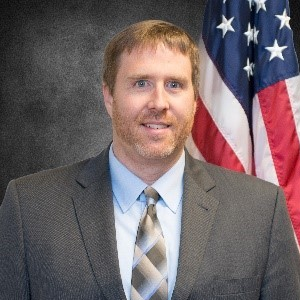 Josh Fitzpatrick Josh Fitzpatrick
Environmental Program Officer
National Telecommunications and Information Administration
Josh Fitzpatrick has worked in environmental review and compliance for more than 16 years and is currently a National Telecommunications and Information Administration (NTIA) Environmental Program Officer focusing on NEPA compliance for a host of NTIA funded projects. Before coming to NTIA, Josh worked in NEPA compliance and policy development and as a Tribal Liaison with the Federal Aviation Administration (FAA). During his FAA tenure, he also served in a one-year detail with the Federal Permitting Improvement Steering Council (FPISC) focusing on how to make large and complex Environmental Impact Statement (EIS) reviews more efficient, concurrent, and timely. He began his federal service with the Army Corps of Engineers as a Project Manager working on off-channel salmon habitat restoration and wetland permitting.
|
|
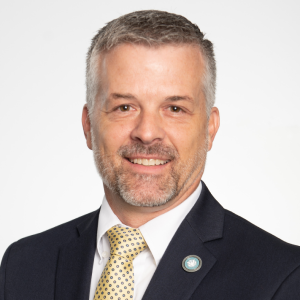 Craig Litteken, PMP Craig Litteken, PMP
Infrastructure Project Advisor
Federal Permitting Council
Mr. Craig J. Litteken is an Infrastructure Project Advisor with the Federal Permitting Council with responsibility for providing coordination and oversight of Federal permitting schedules for FAST-41 covered projects. His project portfolio includes offshore wind, broadband, ports, non-Federal hydropower, and critical minerals mining. Prior to the Permitting Council, Mr. Litteken spent 28-years with the U.S. Army Corps of Engineers with his most recent position as Regulatory Division Chief in USACE Mobile District. Mr. Litteken also held previous positions within USACE in St. Louis and Kansas City Districts and multiple temporary assignments including USACE Headquarters, Fort Worth District, and Puerto Rico.
|
Session 7.4 B
Minnesota | Minnesota Drainage Rights in the Bullseye of Environmental Review
9:00 – 9:30 AM
| About the Presentation |
|
Since early 2022 Minnesota citizens have been leveraging the provisions of Minnesota's Environmental Policy Act to petition for environmental assessment worksheets (EAWs) to be completed on public agricultural drainage improvement projects in Minnesota, particularly those that take place in the Minnesota River Basin region covering nearly a 15,000 square mile area in southwestern Minnesota. The anticipated result of the citizen-petitioned EAWs on agricultural drainage projects is beyond the evaluation of a specific project's impact. It is an escalation of an increasingly coordinated effort to stop, or reduce, agricultural water drainage improvement in this region. Yet Minnesota's public agricultural drainage law, enacted in the first legislative session after achieving statehood in 1858, codifies the right to drain land for agricultural purposes when the benefited property owners are assessed for the cost of the project. The law is firmly embedded in Minnesota's strong agricultural community which contributes $21.3 billion in annual sales, placing Minnesota seventh nationwide in agricultural production and third in total crops cash receipts. In 2008, environmental considerations such as fish and wildlife, shallow groundwater, water quality, and overall environmental impact were incorporated into Minnesota's public drainage law. These considerations have expanded over time to include compatibility with land use, downstream impacts, and more. The assessment of the environmental considerations must be documented in the engineering reports that form the basis for governmental boards to order, and subsequently assess benefitted property owners, for these public drainage projects. This session will include a comparison of the statutory requirements for public agricultural drainage as they relate to the criteria for determining potential for significant environmental effects outlined in Minnesota environmental review rules. The citizen petitioners' allegations and evidence for the need of an EAW on specific projects will be examined based on relevancy to and consequence of proposed drainage projects. Citizen petitioner concerns include groundwater contamination, soil loss, increased velocity and flow to downstream waters, changes to geomorphology, nitrate contribution to the hypoxic zone in the Gulf of Mexico, increased atmospheric carbon, destruction of nature, and loss of biodiversity. The perceived gap between the drainage project requirements, drainage rights, and downstream impacts will be explored. Remedies for bridging this gap, including public infrastructure investments to obtain greater environmental benefits, will be presented with recommendations on how to meet drainage rights afforded the benefited property owners as well as the increased societal demands from these infrastructure investments. Lastly, the determination of the responsible governmental unit and who should bear the costs of a citizen's petition for environmental review will be discussed.
Objectives
- Develop a shared understanding of Minnesota's Public Drainage Law as it relates to Minnesota's Environmental Policy Act
- Explore opportunities to provide remedies to environmental concerns that move drainage projects forward in a manner that increases environmental outcomes and allows producers to address climate concerns while still achieving financial goals
- Bridge a gap and entice positive momentum to resolve rather than escalate ag/environmental conflict.
|
| About the Speaker |
|
 Julie Blackburn, Certified Floodplain Manager Julie Blackburn, Certified Floodplain Manager
Water Business Unit Leader
ISG, Inc.
Leading ISG's Water Business Unit, Julie has dedicated her 25-year career to facilitating ecological restoration, low-impact design, and water resource management, including policy, planning, restoration, protection, and implementation programs. Her love of water began when her family moved from Chicago to northern Minnesota's lakes region when she was 6 years old. Both her undergraduate and graduate degrees are double majors in Cultural Anthropology and Environmental Science.
|
Back to Top
Back to Schedule
|